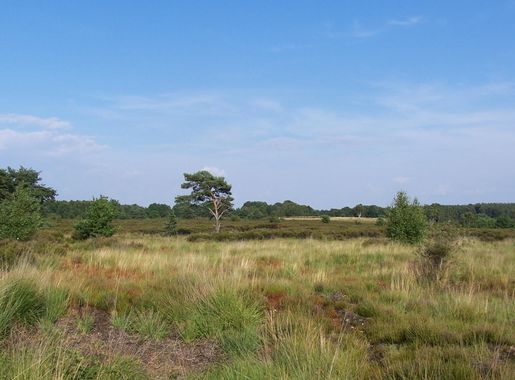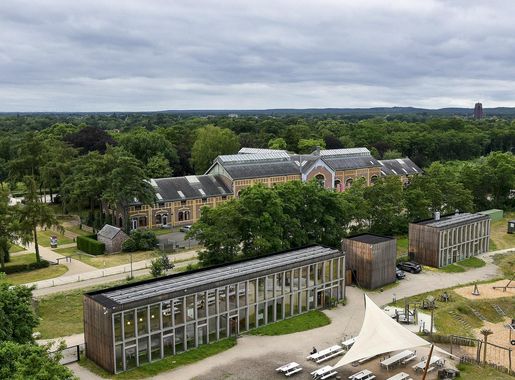
Hoge Kempen National Park: Belgium's Natural Gem
Explore the pristine landscapes of Hoge Kempen National Park, Belgium's premier natural reserve, offering diverse trails, rich wildlife, and serene lakes for all nature lovers.
Hoge Kempen National Park in Belgium is a sprawling natural reserve that spans over 12,000 hectares. The park is known for its diverse landscapes, including dense forests, expansive heathlands, and tranquil lakes. This stunning park offers a unique opportunity to experience the beauty of Belgium's natural environment. Visitors can explore more than 200 kilometers of well-marked trails, perfect for hiking, biking, and even horseback riding. The park is home to an array of wildlife, including deer, wild boar, and various bird species. Bird watchers will be particularly thrilled with the chance to spot rare and migratory birds. The Hoge Kempen National Park also features several visitor centers that provide educational exhibits about the park's flora and fauna, as well as the history of the region. These centers are great starting points for your adventure, offering maps, guides, and helpful information. For those looking for a more relaxed experience, the park's serene lakes offer opportunities for fishing and picnicking. During the summer months, guided tours and ranger-led activities are available, providing deeper insights into the park's ecosystems. Whether you are an avid outdoor enthusiast or simply looking for a peaceful retreat, Hoge Kempen National Park is a must-visit destination in Belgium.
Local tips in Hoge Kempen National Park
- Wear comfortable walking shoes as the park has extensive trails.
- Visit the park's visitor centers for maps and information on the best routes.
- Bring binoculars for bird watching—many rare species can be spotted.
- Check the park's schedule for guided tours and ranger-led activities.
- Pack a picnic to enjoy by the lakes for a relaxing break.
Hoge Kempen National Park: Belgium's Natural Gem
Hoge Kempen National Park in Belgium is a sprawling natural reserve that spans over 12,000 hectares. The park is known for its diverse landscapes, including dense forests, expansive heathlands, and tranquil lakes. This stunning park offers a unique opportunity to experience the beauty of Belgium's natural environment. Visitors can explore more than 200 kilometers of well-marked trails, perfect for hiking, biking, and even horseback riding. The park is home to an array of wildlife, including deer, wild boar, and various bird species. Bird watchers will be particularly thrilled with the chance to spot rare and migratory birds. The Hoge Kempen National Park also features several visitor centers that provide educational exhibits about the park's flora and fauna, as well as the history of the region. These centers are great starting points for your adventure, offering maps, guides, and helpful information. For those looking for a more relaxed experience, the park's serene lakes offer opportunities for fishing and picnicking. During the summer months, guided tours and ranger-led activities are available, providing deeper insights into the park's ecosystems. Whether you are an avid outdoor enthusiast or simply looking for a peaceful retreat, Hoge Kempen National Park is a must-visit destination in Belgium.
When is the best time to go to Hoge Kempen National Park?
Iconic landmarks you can’t miss
National Park Hoge Kempen
Explore the breathtaking landscapes and diverse ecosystems of National Park Hoge Kempen, a premier destination for nature lovers in Belgium.
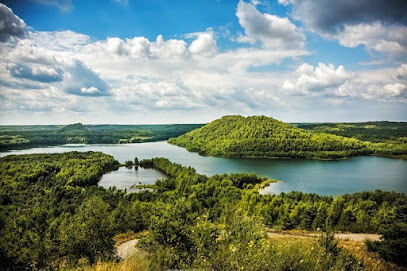
Hoge Kempen National Park - Lieteberg
Experience the natural beauty and tranquility of Hoge Kempen National Park - Lieteberg, Belgium's breathtaking national reserve with diverse landscapes and rich wildlife.
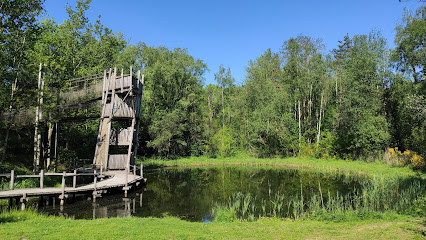
Unmissable attractions to see
Fort Eben-Emael
Discover the strategic marvel of Fort Eben-Emael, a historic military fortress near Liège, Belgium, showcasing wartime history and stunning architecture.
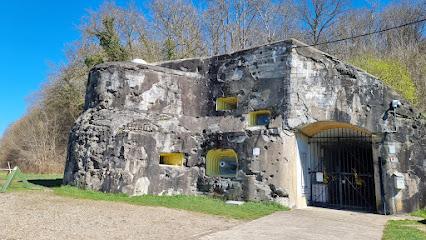
Terhills
Discover the beauty of Terhills, a national reserve in Maasmechelen, Belgium, where nature and adventure await every traveler.
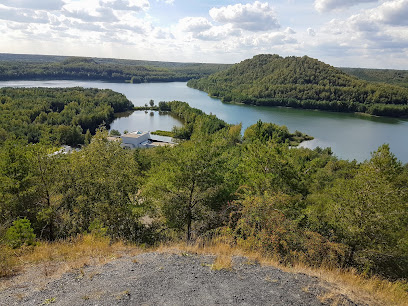
Cycling through water - Bokrijk
Discover the unique Cycling Through Water experience in Bokrijk, where cycling meets nature in a breathtaking landscape of waterways and greenery.
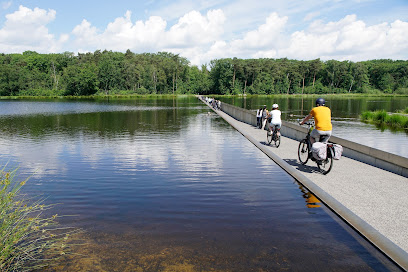
Mechelse Heide
Experience the stunning landscapes and diverse wildlife at Mechelse Heide, a nature preserve in Belgium perfect for outdoor exploration and relaxation.
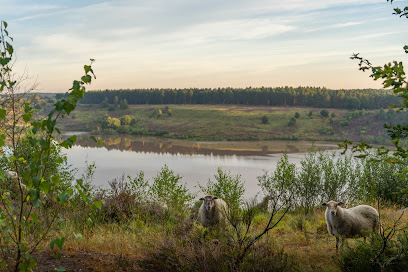
domain Pietersheim
Discover the tranquil beauty of Domain Pietersheim, a lush park in Lanaken offering rich history and serene nature for every traveler.
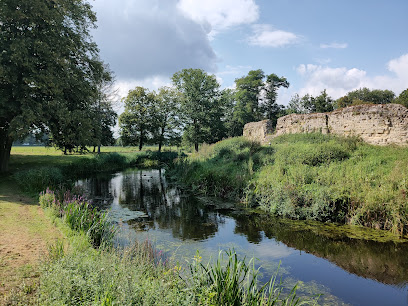
Blotevoetenpad Lieteberg
Experience the unique barefoot walking adventure at Blotevoetenpad Lieteberg, an enchanting attraction in Zutendaal's stunning national park.
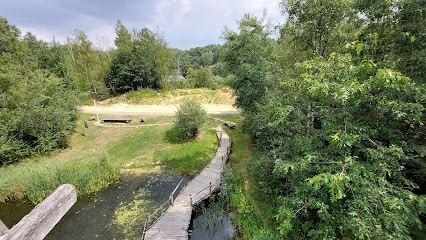
Domein Kelchterhoef
Explore the natural beauty and recreational delights of Domein Kelchterhoef, a top tourist attraction for families and nature lovers in Belgium.
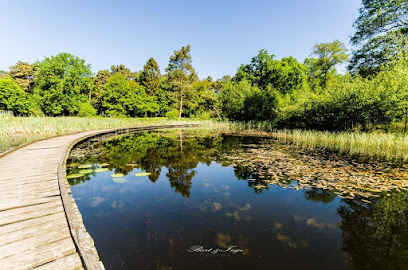
Kattevennen Genk: Toegangspoort Hoge Kempen
Discover Kattevennen Genk, the gateway to Hoge Kempen National Park, where nature meets adventure in a stunning outdoor paradise.
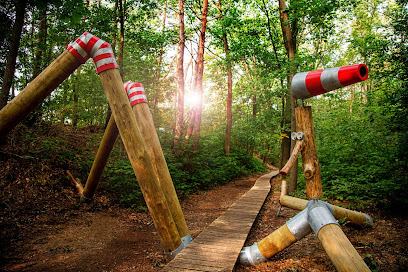
Fort de Loncin (FSFL)
Explore Fort de Loncin, a historical fortress and war museum in Belgium, rich in military history and architectural grandeur.
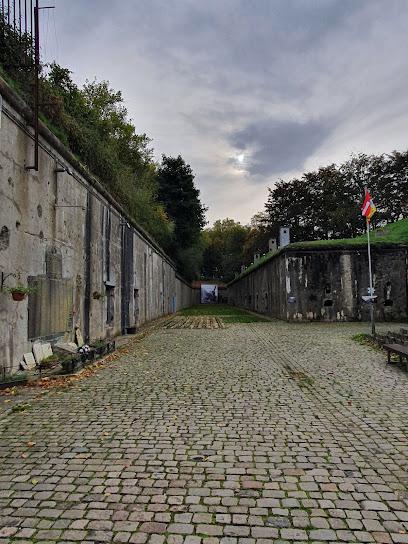
Fort de Lantin
Explore the historical allure of Fort de Lantin, a fortified museum in Juprelle, Belgium, rich in military history and stunning architecture.
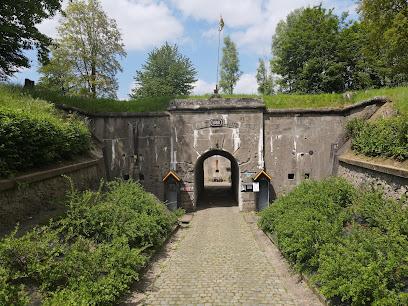
Hoge Kempen National Park - Lieteberg
Experience the natural splendor of Hoge Kempen National Park, Belgium's stunning national reserve with breathtaking landscapes and diverse wildlife.
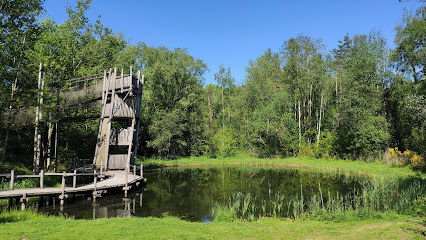
Waterburcht Pietersheim
Experience the beauty and history of Waterburcht Pietersheim, a stunning castle and hiking area in Lanaken that offers a perfect escape into nature.
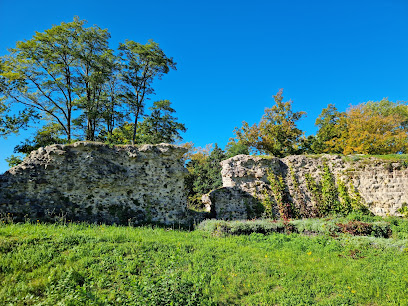
Oudsberg
Discover Oudsberg, a stunning nature preserve in Belgium, perfect for hiking, biking, and enjoying the beauty of the outdoors.
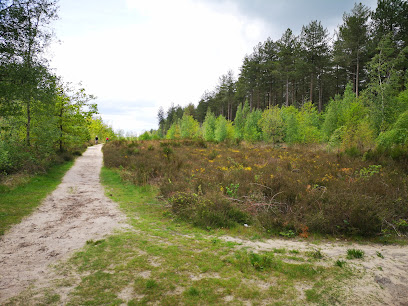
Fort Flémalle
Discover the historic Fort Flémalle, a military fortress and museum in Belgium, where history meets breathtaking scenery for an unforgettable visit.
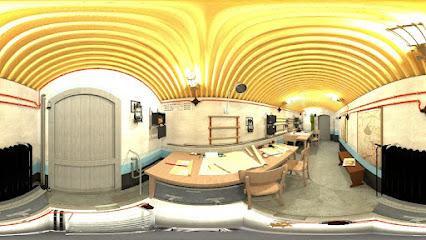
Uitkijktoren te As
Experience breathtaking views and natural beauty at Uitkijktoren te As, a must-visit observation tower in Limburg, Belgium.
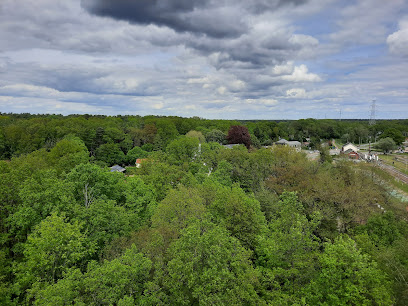
Essential places to dine
Ter Rivierenhof (Restaurant/Taverne)
Experience authentic Belgian cuisine at Ter Rivierenhof in Antwerp - where tradition meets flavor in every dish.
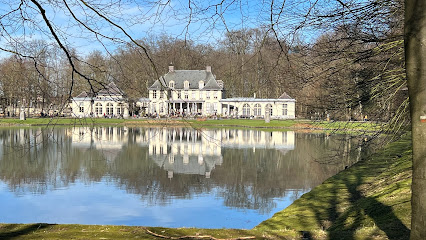
Hotel Mardaga
Discover comfort at Hotel Mardaga in As - where modern hospitality meets stunning natural landscapes.

Litzberg
Discover Litzberg: A charming brasserie in Dilsen-Stokkem offering delicious local cuisine and warm hospitality.
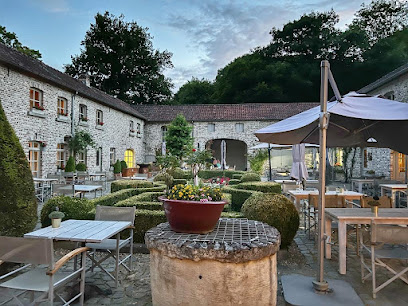
De Kleinen Bistro
Experience authentic Belgian cuisine at De Kleinen Bistro in Malle – where every dish tells a story of flavor and tradition.
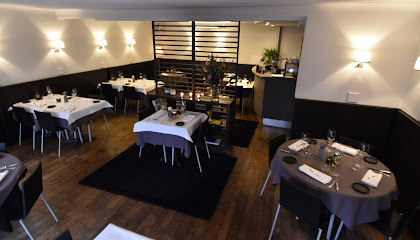
Eetcafé de Lage Kempen
Discover Eetcafé de Lage Kempen in Hechtel-Eksel - where family-friendly dining meets delicious Belgian cuisine in a cozy atmosphere.
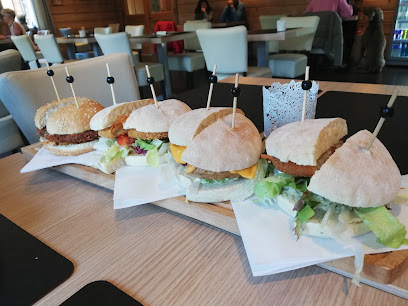
Brasserie Julia's
Discover culinary delights at Brasserie Julia's in Zutendaal – where tradition meets contemporary dining.
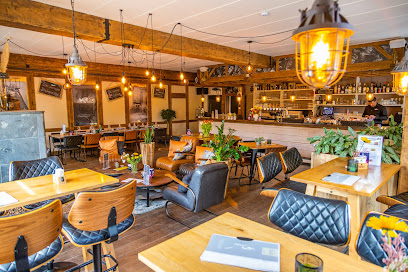
Markets, malls and hidden boutiques
Maasmechelen Village
Maasmechelen Village: Your ultimate shopping destination in Belgium with luxury brands at outlet prices.
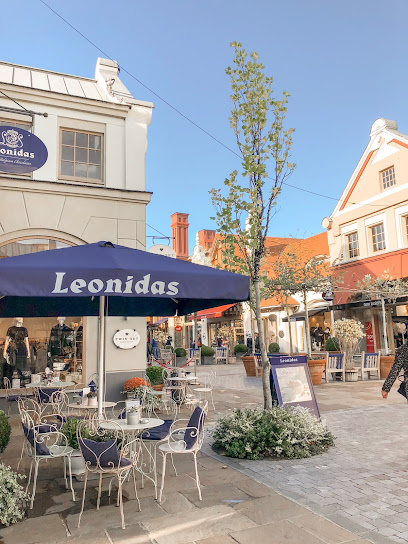
National Park Hoge Kempen
Explore the stunning National Park Hoge Kempen, Belgium's only national park, where nature thrives and adventure awaits around every corner.
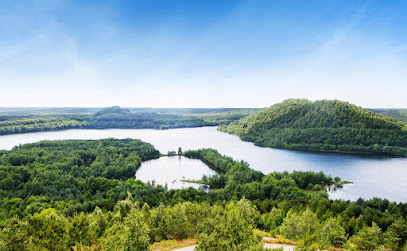
M2 Shopping Center
Explore the M2 Shopping Center in Maasmechelen for an unforgettable shopping experience filled with diverse stores, delicious dining, and a vibrant atmosphere.
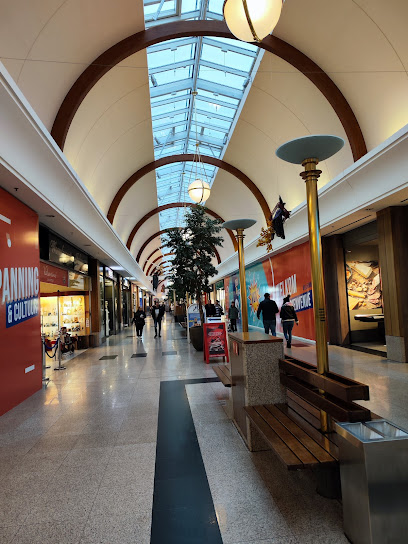
Action Maasmechelen
Explore Action Maasmechelen: A Diverse Shopping Haven for Unique Gifts, DIY Supplies, and Home Goods in Belgium.
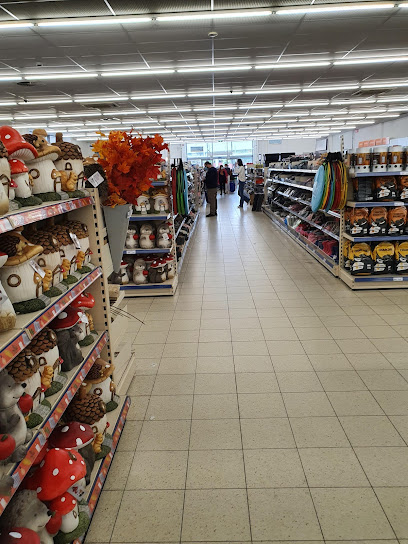
Nike Factory Store
Shop top-quality sportswear and footwear at unbeatable prices at the Nike Factory Store in Maasmechelen, Belgium.
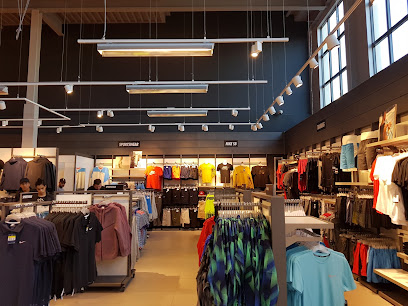
Michael Kors Outlet
Shop stylishly at the Michael Kors Outlet in Maasmechelen, where luxury fashion meets affordability for discerning tourists.

NEW YORKER
Explore NEW YORKER in Maasmechelen for trendy clothing, accessories, and more. A premier shopping destination for fashion lovers of all ages!
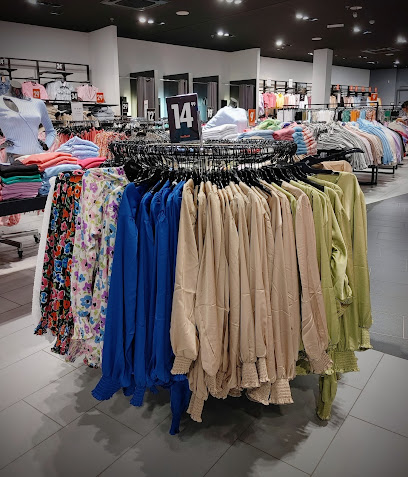
Polo Ralph Lauren Outlet Store Maasmechelen
Explore the Polo Ralph Lauren Outlet Store in Maasmechelen for exclusive deals on stylish apparel and accessories for the whole family.
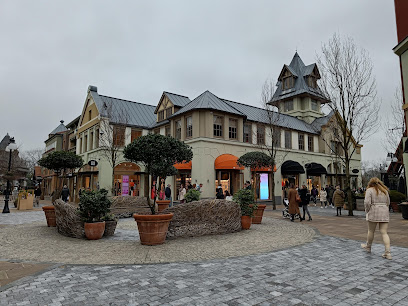
Boss
Discover Boss in Maasmechelen, where high-end fashion meets exceptional service for an unforgettable shopping experience.
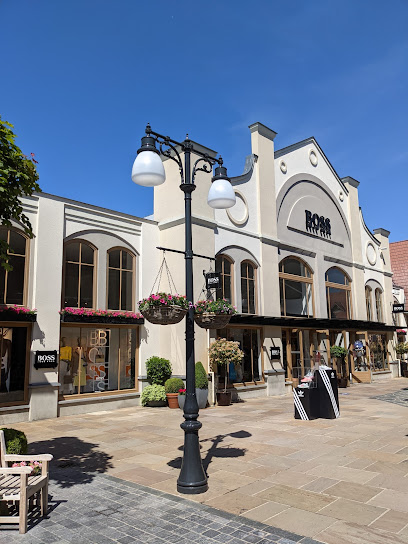
Ted Baker- Maasmechelen Outlet
Immerse yourself in the world of luxury fashion at Ted Baker in Maasmechelen Village, offering stylish clothing and accessories for every occasion.
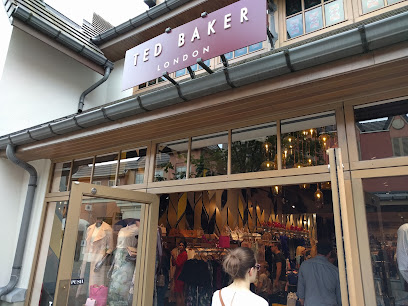
C&A
Discover the latest trends in fashion at C&A in Maasmechelen, offering stylish clothing for men, women, and children with a commitment to sustainability.
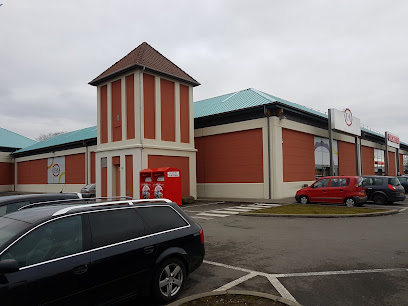
D'amici Italian Specialties
Discover the authentic flavors of Italy at D'amici Italian Specialties in Maasmechelen, where fresh produce and gourmet products await.
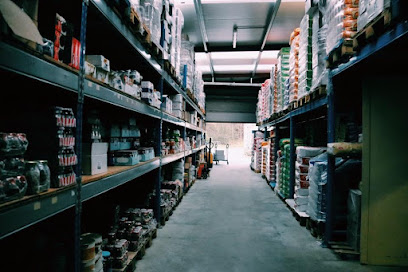
Icen Market
Discover the vibrant Icen Market in Maasmechelen, where diverse cultures blend through food, gifts, and local products.
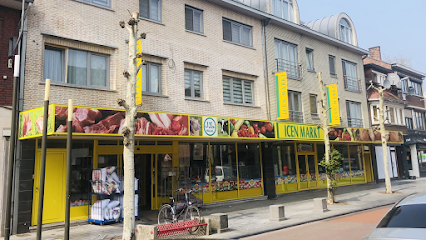
Kipling Maasmechelen
Explore stylish fashion accessories and durable luggage at Kipling Maasmechelen, your go-to destination for travel essentials.
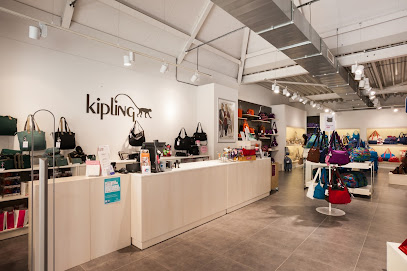
The Society Shop
Explore contemporary men's fashion at The Society Shop in Maasmechelen, where style meets quality and personal service.
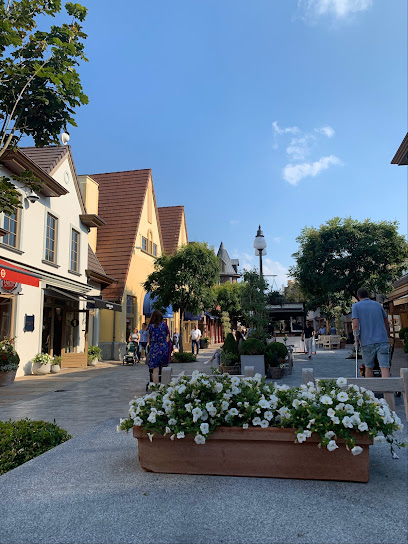
Essential bars & hidden hideouts
WonderBar
Experience the best cocktails in Genk at WonderBar, where vibrant ambiance meets delicious flavors in every drink.
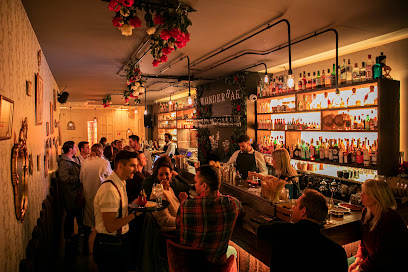
D'Oelend
Experience the best of local and international cuisine at D'Oelend, a must-visit restaurant in As, Belgium, renowned for its warm ambiance and fresh ingredients.
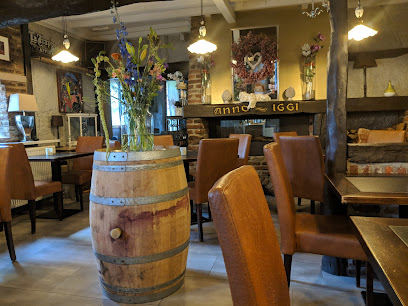
Hotel Mardaga
Discover the perfect blend of comfort and culinary delight at Hotel Mardaga in As, Belgium, a haven for tourists seeking relaxation and quality dining.

Bar-T
Experience the culinary delights of Bar-T in Genk, where local flavors and a cozy atmosphere await every visitor.
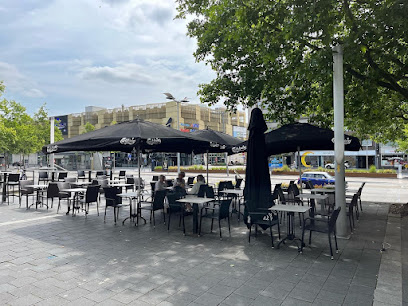
RestoClub The Lagoon
Discover the vibrant RestoClub The Lagoon in Maasmechelen, where exquisite cocktails and delicious tapas come together in a lively atmosphere.
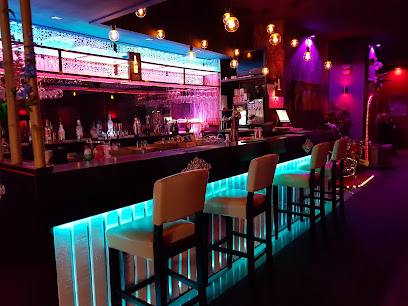
Roots
Experience the vibrant fusion of cocktails and tapas at Roots in Genk, Belgium - a must-visit culinary hotspot for food lovers.
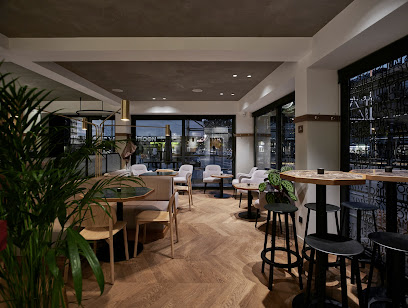
Franco Gallo
Discover the exquisite world of wines at Franco Gallo, Maasmechelen's premier wine bar offering a delightful selection and perfect pairings.
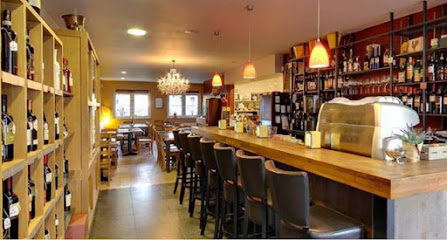
Maasbar
Discover Maasbar in Maasmechelen: A charming bar offering a cozy atmosphere and diverse drink options for a memorable night out.
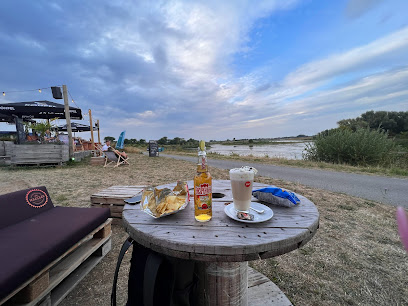
Ragnarok Live Club
Experience the ultimate rock and metal vibe at Ragnarok Live Club in Bree, where live music meets an electrifying atmosphere.
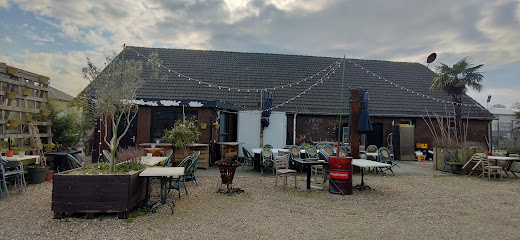
Roots Pub
Discover the lively atmosphere and local brews at Roots Pub in Genk – a must-visit for an authentic Belgian pub experience.

Den Dörpel
Discover the charm of Den Dörpel, a cozy bar in Maasmechelen offering a variety of drinks and a friendly atmosphere for all visitors.
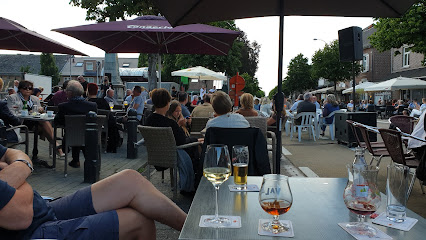
Sonja's cafe
Discover the charm of Sonja's Cafe in Maaseik, where cozy ambiance meets delicious flavors in a friendly atmosphere.
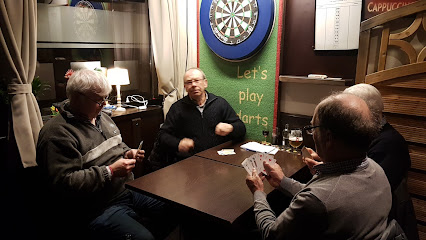
Mi Casa y Más
Experience the vibrant flavors of Spain at Mi Casa y Más, a charming tapas restaurant in As, Belgium, perfect for culinary adventurers.
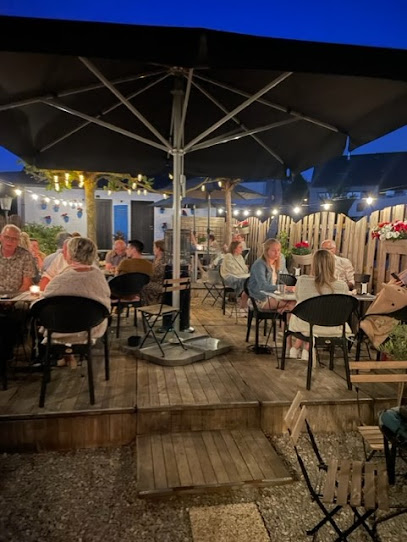
Moon Lounge
Discover the stylish Moon Lounge in Genk, a perfect spot for cocktails, light bites, and vibrant nightlife amidst chic decor and friendly ambiance.
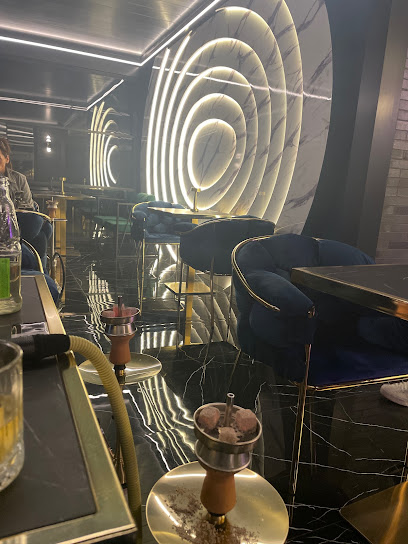
The Corn Exchange
Experience the warmth of Belgian hospitality at The Corn Exchange, a charming pub in Dilsen-Stokkem offering a diverse selection of drinks and a lively atmosphere.
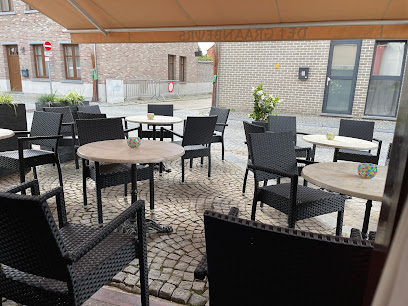
Local Phrases about Hoge Kempen National Park
-
- HelloHallo
[ha-lo] - GoodbyeTot ziens
[tot zeens] - YesJa
[ya] - NoNee
[nee] - Please/You're welcomeAlsjeblieft
[als-ye-bleeft] - Thank youDank je
[dank ye] - Excuse me/SorrySorry
[soh-ree] - How are you?Hoe gaat het met je?
[hoo gat het met ye] - Fine. And you?Goed. En met jou?
[hoode. en met yow] - Do you speak English?Spreek je Engels?
[sprek ye engels] - I don't understandIk begrijp het niet
[ik buh-gryp het neet]
- HelloHallo
-
- I'd like to see the menu, pleaseIk zou graag de menukaart zien, alstublieft
[ik zou graag deh meh-noo-kart seen, al-stu-bleeft] - I don't eat meatIk eet geen vlees
[ik ayt khayn vleys] - Cheers!Proost!
[prohst] - I would like to pay, pleaseIk zou graag willen betalen, alstublieft
[ik zou graag vil-len buh-tah-lun, al-stu-bleeft]
- I'd like to see the menu, pleaseIk zou graag de menukaart zien, alstublieft
-
- Help!Help!
[help] - Go away!Ga weg!
[ga wegh] - Call the Police!Bel de politie!
[bel deh poh-lee-see] - Call a doctor!Bel een dokter!
[bel ayn dok-ter] - I'm lostIk ben verdwaald
[ik ben fer-dwahld] - I'm illIk ben ziek
[ik ben zik]
- Help!Help!
-
- I'd like to buy...Ik wil graag kopen...
[ik vil khraag koh-pun] - I'm just lookingIk ben gewoon aan het kijken
[ik ben khuh-woon ahn het kee-ken] - How much is it?Hoeveel kost het?
[hoo-vel kost het] - That's too expensiveDat is te duur
[dat is tuh dyur] - Can you lower the price?Kan je de prijs verlagen?
[kan ye deh prays fuh-rah-lah-ghun]
- I'd like to buy...Ik wil graag kopen...
-
- What time is it?Hoe laat is het?
[hoo laht is het] - It's one o'clockHet is een uur
[het is ayn uhr] - Half past (10)Half elf
[half elf] - MorningOchtend
[ohk-tent] - AfternoonMiddag
[mid-dahg] - EveningAvond
[ah-vont] - YesterdayGisteren
[gis-tuh-run] - TodayVandaag
[vahn-dahgh] - TomorrowMorgen
[mor-ghun] - 1Een
[ayn] - 2Twee
[tweh] - 3Drie
[dree] - 4Vier
[feer] - 5Vijf
[vayf] - 6Zes
[zehs] - 7Zeven
[zeh-ven] - 8Acht
[ahkht] - 9Negen
[nay-ghun] - 10Tien
[teen]
- What time is it?Hoe laat is het?
-
- Where's a/the...?Waar is een/de...?
[vahr is ayn/deh] - What's the address?Wat is het adres?
[vaht is het ah-dres] - Can you show me (on the map)?Kan je me dat laten zien (op de kaart)?
[kan ye me dat laht-un seen (op deh kart)] - When's the next (bus)?Wanneer is de volgende (bus)?
[vahn-er is deh vol-ghun-duh (bus)] - A ticket (to ....)Een kaartje (naar ....)
[ayn kart-yuh (nar)]
- Where's a/the...?Waar is een/de...?
History of Hoge Kempen National Park
-
The Hoge Kempen region has a rich prehistoric past, evidenced by numerous archaeological findings. Flint tools and remains of ancient settlements indicate that this area was inhabited by early humans thousands of years ago. These artifacts provide glimpses into the lives of the hunter-gatherers who roamed the landscape during the Paleolithic and Neolithic periods.
-
During the Roman era, the region that now encompasses Hoge Kempen National Park was part of the province of Germania Inferior. The Romans constructed roads and infrastructure, connecting local settlements to larger trade networks. Artefacts such as coins, pottery, and remnants of Roman villas reveal the extent of Roman influence and the integration of local communities into the broader Roman world.
-
In the Middle Ages, the Hoge Kempen area saw the establishment of several small settlements and agricultural communities. Monasteries and abbeys played a significant role in the development of the region, with monks often engaging in farming and land management. The remnants of medieval churches and farmhouses can still be found scattered across the park.
-
The discovery of coal in the 19th century brought significant changes to the Hoge Kempen region. The Industrial Revolution spurred the development of coal mines, which attracted workers and led to the growth of mining communities. This period saw the construction of railways and infrastructure to support the booming coal industry. The legacy of this era is still visible in the form of former mining sites and industrial heritage monuments within the park.
-
After World War II, efforts were made to rehabilitate the Hoge Kempen landscape, which had suffered from industrial exploitation and deforestation. Large-scale reforestation projects were undertaken to restore the natural environment. Pine plantations were established, and over time, the area transformed into a diverse ecological habitat, setting the stage for the creation of the national park.
-
Hoge Kempen National Park was officially established in 2006 as Belgium’s first national park. The park spans around 12,000 hectares and is celebrated for its unique biodiversity, including heathlands, woodlands, and wetlands. The establishment of the park marked a significant milestone in conservation efforts, aimed at preserving the natural and cultural heritage of the region for future generations.
-
The communities surrounding Hoge Kempen National Park are rich in cultural traditions and folklore. Local festivals, traditional crafts, and regional cuisine reflect the deep-rooted customs of the area. Visitors can immerse themselves in the local culture by exploring village museums, attending folk events, and sampling traditional dishes that have been passed down through generations.
Hoge Kempen National Park Essentials
-
Hoge Kempen National Park is located in the Limburg province of Belgium. The nearest major city is Maastricht in the Netherlands, which is about 20 kilometers away. The closest international airport is Maastricht Aachen Airport (MST), and Brussels Airport (BRU) is another viable option, approximately 90 kilometers from the park. From these airports, you can rent a car or take a train to reach Hoge Kempen. The Belgian Railways (SNCB/NMBS) provide services to the nearest train station, Genk, from where you can take a bus or taxi to the park.
-
Once in Hoge Kempen National Park, the most convenient way to explore is by car or bicycle. Several car rental services are available at the nearby airports and in major cities. For those preferring public transport, local buses operated by De Lijn connect various parts of the park and neighboring towns. Cycling is highly recommended, with many well-marked trails available. You can rent bicycles at several points within the park.
-
Belgium uses the Euro (EUR) as its currency. Credit and debit cards are widely accepted in most establishments, including restaurants, shops, and hotels within and around Hoge Kempen National Park. However, it is advisable to carry some cash for smaller purchases or in more remote areas where card facilities may not be available. ATMs are available in nearby towns like Genk and Maasmechelen.
-
Hoge Kempen National Park is generally a safe destination for tourists. Standard safety precautions such as not leaving valuables unattended and being aware of your surroundings are recommended. There are no specific high-crime areas targeting tourists within the park. However, always stay on marked paths and follow park regulations to ensure your safety.
-
In case of emergency, dial 112 for immediate assistance, which is the universal emergency number in Belgium. The nearest hospitals are in Genk and Maasmechelen. It is recommended to have travel insurance that covers medical emergencies. For minor health issues, pharmacies are available in nearby towns where you can purchase over-the-counter medications.
-
Fashion: Do wear comfortable and weather-appropriate clothing, especially when hiking. Avoid overly casual or beachwear in town areas. Religion: Do respect local customs, though the area is not particularly religious. Public Transport: Do validate your ticket before boarding buses. Don't be loud or disruptive. Greetings: Do greet people with a friendly 'hello' or 'bonjour'. A handshake is common. Eating & Drinking: Do try the local cuisine, including Limburgse vlaai (a local pie). Don't leave food waste in the park; use designated waste bins.
-
To experience Hoge Kempen National Park like a local, consider visiting during the shoulder seasons (spring and autumn) when the park is less crowded, and the scenery is stunning. Engage with park rangers who can provide insightful information about the flora and fauna. Don't miss the Connecterra area for some of the best panoramic views. Additionally, explore local markets in nearby towns for fresh produce and regional specialties.
Nearby Cities to Hoge Kempen National Park
-
Things To Do in Maastricht
-
Things To Do in Hasselt
-
Things To Do in Liege
-
Things To Do in Aachen
-
Things To Do in Eindhoven
-
Things To Do in Spa
-
Things To Do in Leuven
-
Things To Do in Durbuy
-
Things To Do in Namur
-
Things To Do in Louvain-la-Neuve
-
Things To Do in Mechelen
-
Things To Do in Dusseldorf
-
Things To Do in Antwerp
-
Things To Do in Brussels
-
Things To Do in La Roche-en-Ardenne


